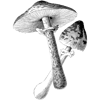It is imperative for any large scale development project that you put together a solid scrum team.
What is a scrum team though? What are the team roles, the so-called scrum roles, and what do they do?
Well..we should first look at what exactly scrum is and talk a little about scrum theory.
What is Scrum?
Scrum is the most commonly used and popular framework in agile and among agile teams.
Agile describes a specific set of foundational values for organizing and managing complex work.
Many people believe that scrum is an agile framework, but that’s not quite the case.
Scrum is a set of rigid project management principles whereas Agile is more of a way of thinking; it’s a collection of mindset values instead of precisely documented tactics and methods.
Scrum is rooted in software development, but scrum today is used in most industries to optimize the successful delivery of complex and innovative products.
If you want to find out more about agile, you can do so by reading this article.
Benefits of Using Scrum
Many companies have begun using scrum to streamline communication, collaborate more efficiently, and increase focus.
A scrum team allows full flexibility to help manage changes. Priorities are constantly changing in any business and using an agile platform like scrum increases your ability to manage those changing priorities more effectively.
Using the scrum method gives increased visibility into projects for all parties involved. This increased visibility helps everyone stay on the same page.
There is often a lack of communication between business and IT; oftentimes it’s like these two departments are speaking completely different languages. Scrum helps to bridge that gap by providing more alignment between departments and making communication much more efficient.
The fiscal benefits of scrum are substantial. You will be able to create much more complex and high-quality products while meeting deadlines and speeding up the software development process. This will make it much quicker to go-to-market and start reaping the rewards of all of your hard work.
But how do you actually measure your success in terms of Scrum? How do you know whether you’re following the scrum values and not deviating from the foundational principles?
You can use a scrum software like Codegiant to help you streamline and track your work progress better.
Scrum Theory
Scrum is based on the theory of empirical process control. Empirical process control is based on three key pillars:
- Transparency: In order to make a decision, people need complete visibility into the scrum process and the current state of the product.
- Inspection: To keep everyone on track and on the same page, inspections need to be done at regular intervals.
- Adaptation: If someone does deviate from the original sprint plan, the product or process needs to be adjusted immediately.
Scrum is both iterative and incremental and this is key in a successful agile operation.
The cycle of operations needs to be repetitive, with the goal being to bring the desired decision or result closer to discovery with each repetition.
Scrum teams deploy working software in small increments in order to keep up with the feature demands of customers.
An increment, as described in the scrum guide, is basically the sum of all the PO (product backlog) items completed during the sprint along with the value of the increments of all the past sprints. Learn more here.
What is a sprint though?
A sprint is a time box of usually 2-4 weeks during which a completed product increment is created. It’s important to note that after you finish a sprint, the next sprint starts immediately overlapping with the one you just finished.
The Roles of a Scrum Team
According to the scrum guide, there are three key roles in a scrum team:
- The Product Owner.
- The Scrum Master.
- The Development Team.
A scrum team will work together through scrum ceremonies to complete a project. You can read more about scrum ceremonies here.
These three roles are all equally important and form a three-way Venn diagram (the one below).
Product Owner
The Product Owner is the visionary of the scrum team.
He/she is the spearhead of the operation, they make the final decision of what the product will look like as well as what features it will have.
As seen in the scrum roles diagram, the scrum product owner manages the product backlog and optimizes the value of the product.
What is a product backlog?
The product backlog is part of the three scrum artifacts: the product backlog, sprint backlog, and potentially releasable product increment.
The product backlog contains all the items (tasks) that the team needs to complete. If you’d like to learn more, this is a good read for you.
Here are the roles and responsibilities of a scrum product owner:
- Define product backlog items.
- Define goals and missions for the product backlog.
- Increase the value of work performed by the scrum development team.
- Ensure that the product backlog is clear and that a roadmap is laid out for the rest of the scrum team.
- Confirms that the development team has a clear and concise understanding of the items in the product backlog.
- Also, the product owner is the only one who has the authority to cancel the sprint. A sprint is usually cancelled when the scrum goal becomes obsolete. But be careful - sprint cancellations can cost your team a lot of resources, time, and money.
What does it take to be a great Product Owner?
- Product owners need to be excellent decision-makers and express authority in the decisions they make.
- The Product Owner needs to have in-depth knowledge of the business and the market they are working in.
- They need to be persuasive, to gain trust from their team and from stakeholders.
- They need to fully understand the customers wants and needs, and transform that into language the team can understand.
The Product Owner is always going to be the final decision-maker.
They need to be able to put their foot down and say yes to the right product features and decline the rest.
Nevertheless, everyone, including the scrum master and the development team, participate in the sprint planning meeting in order to come up with proper sprint hours estimates, and commit to the scrum product backlog.
Trust between the Product Owner and the Development team is imperative.
The Product Owner needs to trust that the Development Team will do what is asked of them, and the Development Team must trust that the decisions made by the Product Owner provide the highest level of value.
The Product Owner has their hands on a lot of different elements of the project and ultimately will need to be very organized; this is a lot easier with an effective scrum project management tool like Codegiant.
Codegiant can help the Product Owner ensure that everyone is following the correct scrum process, and the right process is the key to a successful scrum team.
At the end of the sprint, the scrum team will gather into a scrum retrospective meeting to assess how the sprint went, correct mistakes, and double down on things that worked out.
To learn more about the scrum retrospective, or other scrum meetings such as scrum reviews, daily scrums, and more, check out this article.
Scrum Master
What is a scrum master?
The Scrum Master is the glue that holds everything together.
The scrum master’s roles and responsibilities revolve around protecting the team from distractions, helping the team improve, and holding the team accountable to the scrum framework.
Ensuring that scrum values are kept is a key part of being a successful Scrum Master.
Scrum defines 5 values: courage, focus, commitment, respect and openness.
The Scrum Master needs to enforce these values in order to create an environment of safety and trust.
A common myth about Scrum Masters is that they run the daily scrum, but in actual truth, they don't run any of the scrum events. They are responsible for ensuring that scrum events happen. They are the coach of the team and are in charge of keeping the rest of the team on track.
What does a scrum master do?
- Ensures that all tasks are understood by the scrum team.
- Finds techniques for proper backlog management.
- Facilitates scrum events as needed.
- Coaches the development team.
- Helps the development team create top tier products.
- Cleans up roadblocks that may impede the development team.
- Ensures that the team stands on the pillars of scrum, and doesn’t deviate from the main set of values and principles.
These are just a few of the key responsibilities that a Scrum Master must perform.
Entire books have been written on the roles, responsibilities and attributes of a great scrum master but here are a few key things that are necessary for the role:
- A Coaching Mentality: A Scrum Master needs to lead by example and coach their team to ensure that they are performing to the best of their abilities while adhering to the team values set by the entire scrum team.
- Humility: The Scrum Master gives all credit to the team, and not to themselves.
- Authority: The Scrum master is someone you respect and listen to, they need to be a true leader to their team. Agile Advocate: They need to reinforce the scrum principles of agile throughout the entire scrum team.
The name really sums up the responsibilities of the Scrum Master, they serve the entire organization in many different ways. They lead and coach the organization in its scrum adoption, plan scrum implementations, increase productivity and increase the application of scrum in the organization.
Development Team
The development team is the workhorse of the scrum team.
The development team takes the tasks assigned to them by the product owner, decides how to accomplish them, and then makes it happen.
The Development Team performs the following activities:
- They deliver the work through one of the most important scrum ceremonies; the sprint.
- They must self organize and make decisions together to ensure that all work gets done.
- They perform the day-to-day activities and knock out the items listed on the backlog.
- They are responsible for providing transparency to the product so all departments are aware of the progress made.
Development teams are not built in large quantities, they are usually an average of 3-9 people not including the Scrum Master or Product Owner.
It is important to stay in this size range. If the team is too small it wouldn't be able to accomplish each sprint, and if it becomes too big, communication will suffer.
There a few key traits that help to make a great dev team:
- Team mentality: Members of the team must work well together and have full trust and confidence in their counterparts.
- Cross Functional: The team must possess all skills necessary.
- Humility: The development team does not give titles or create sub teams. All team members are treated equally and have equal responsibility.
- Self-organizing: The team needs to be able to self-organize in order to work together to successfully release working software in increments. Not even the Scrum Master tells the team how to accomplish this.
While being a part of the development team can mean many different things, they lay the groundwork for the final product and are essential for creating efficiency within a scrum team.
Summary
Scrum is a great way to help your business innovate faster. This agile framework speeds up productivity and makes it much quicker to take your idea and turn it into a finished product.
The key is to put together a strong scrum team that works cohesively together to get the product to consumers in the quickest and most efficient way.
There is no hierarchy within this team. You have your product owner, scrum master and development team that will take part in scrum ceremonies and perform scrum events as a whole to get the job completed. All members are equally important and each play a critical role.
Your team must be organized, many companies will use a scrum project management software like Codegiant to ensure that the project remains organized and that all scrum values are being upheld.
If you want to put out the best quality products in the most efficient manner then putting together a strong scrum team is the best way to accomplish this.

![Cover image for Scrum Roles: The Robust Guide [2021]](https://media.dev.to/cdn-cgi/image/width=1000,height=420,fit=cover,gravity=auto,format=auto/https%3A%2F%2Fdev-to-uploads.s3.amazonaws.com%2Fi%2F4kyocukc04rr52jaiqk6.png)






Oldest comments (0)